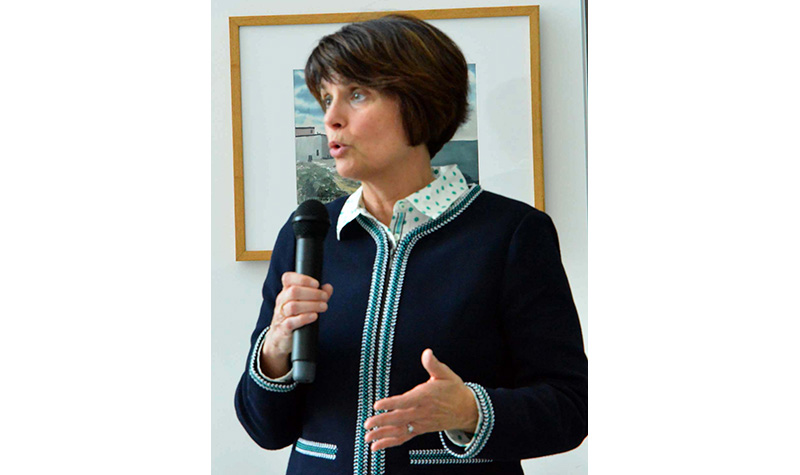From the (Associate) Dean
 The “From the Dean” column is brought to you this week by Laura Block, the School’s associate dean for Administration & Finance and chief operating officer, who will discuss the move into the new academic year (fiscal year 2020) and UND’s new budget model called MIRA.
The “From the Dean” column is brought to you this week by Laura Block, the School’s associate dean for Administration & Finance and chief operating officer, who will discuss the move into the new academic year (fiscal year 2020) and UND’s new budget model called MIRA.
Happy summer, everyone! Here’s hoping you are enjoying the weather and outdoor activities that make this season so enjoyable.
As you may know, our School’s financial resources are forecast through the budget process to adequately fund how we educate health care professionals and discover the knowledge that enhances the lives of North Dakotans. Our major resources are revenues from state appropriations, grants and contracts, and clinical revenues and tuition—in that order. All of these resources have constraints, as well as advantages and disadvantages. For example, we are constrained as to how high our tuition can be, which complicates our ability to generate revenue. But we recognize that raising tuition disadvantages many students and leads to financial stress that can force students to choose areas of specialty or locations for practice post-graduation based on pure financial numbers—that is, possibly out of state. Since this doesn’t serve North Dakota well and can contribute to outmigration, we do our best to keep tuition and student debt low—and have been very successful in doing so.
To that end, we recently finalized the annual budget for our fiscal year that began on July 1. Our biennial budget for 2019-2021 is approximately $200 million, equating to $100 million annually. We will spend the majority (75%) of these resources on salaries and fringe benefits; the remainder goes to operating expenses. Recall that the SMHS, as an institution, is on a separate appropriation line per the Legislature. As part of this appropriation, we are pleased to report that $10.68 million in partial funding for our Healthcare Workforce Initiative will be included in our “base” funding from now on, rather than “one-time” funding as it was previously, making our budget less vulnerable to cuts. Our Healthcare Workforce Initiative has been an important investment, and we continue to explore and enhance plans to expand the cadre of health care providers for North Dakota.
Furthermore, the budget process this time around was complicated by a good thing: salary increases for our most important resource—our people! This past spring, the North Dakota Legislature approved salary increases of 2% for all North Dakota University System faculty and staff with a $120 per month minimum increase and a $200 maximum increase. UND added a merit pool calculated at 4% minus the state-mandated amount. Only a portion of our resources to fund SMHS salary increases comes from state appropriations; a larger share comes from other funds the SMHS generates.
It was nice to close the books on fiscal year 2019 (FY19) in this way. But before we did so, the SMHS also resolved the application of UND’s new Model for Incentive-based Resource Allocation (MIRA) budget for 2019-2021. The goals of MIRA as an incentive-based budget structure make sense insofar as they bring transparency, inclusive decision-making and flexibility into the budgeting process at the same time as they give deans such as Dean Wynne and program directors more direct responsibility over allocation decisions.
Although you can learn more about MIRA here, very generally the system is designed such that the majority of UND revenues will flow to the revenue-generating primary units (e.g., colleges). Revenue is tied to activity levels in the areas of teaching and research, such as student credit hours taught or grants awarded. As these activity levels increase, so does the revenue going to the unit helping generate that activity. Although we will see new “inflows” under the MIRA model, MIRA also assesses a participation fee of 15.8% to certain revenues we attract, such as tuition, meaning we will see new expenses as well. For example, campus service units will allocate a portion of their budgets to primary units like the SMHS. This process is called service unit allocation. The SMHS will continue to have conversations about the extent to which we should be paying for services as a revenue-generating primary unit, and how we are and could be incentivized to help our School be even more profitable under the MIRA model.
The SMHS is ever evolving, of course, and we work to optimize how our resources align with the University’s strategic plan. We will continue to incentivize investments that create the best returns to benefit our School and the state moving forward.
Finally, don’t forget to mark your calendar for UND Night at Target Field and the SMHS pre-game party, and take advantage of the precious non-sub-zero weather in a season that goes by way too fast!
Laura Block, CPA, CFP
Associate Dean for Administration & Finance and COO
UND School of Medicine & Health Sciences



